Why Villa Passalacqua is the new place to go on Italy’s famous lake
With her exquisite new Lake Como property Villa Passalacqua, hotelier Valentina De Santis managed to convert a confirmed beach-lover to the charms of lakeside living.
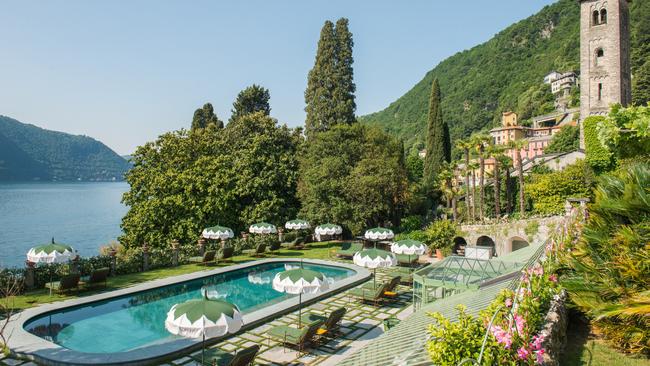
I should begin with a disclosure: I am not a Lake Person. I grew up in California with the Pacific on my doorstep; and from white Caribbean beaches to the pleasures of a Mediterranean summer al mare, oceans and seas have always been the life for me. Waves beating out rhythms on stone or sand, salt in the air, an offshore breeze filling my lungs: I’m here for it, reader.
Lakes, on the other hand. Hmm. Often static, often staid. Often demonstrably, disappointingly finite: with a few sprawling exceptions (Superior; Victoria; the freshwater Caspian Sea), they have no truck with horizons or the alluring unknowns that lie beyond them.
A lake’s unknowability is instead vertical; when they are deep, their inky waters can be melancholy (or just spooky). What exactly is the appeal there, I’ve wondered, when so many salty coasts beckon the world over?
Then this year, a revelation – and in my own backyard: Como. I’d visited just once before, for about 36 midwinter hours in the 1990s, and never felt compelled to return (see: Italian beaches).
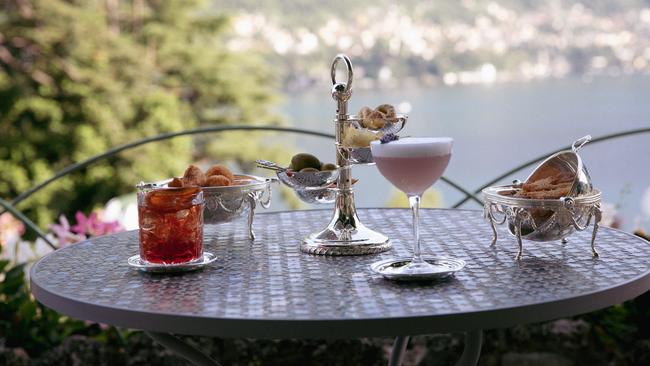
But in the first half of 2022, work conspired to take me there on several occasions. A remarkable 24-suite hotel in the tiny village of Moltrasio, a few kilometres north of the smart town of Cernobbio, was slated to open.
Villa Passalacqua was going to be, so the international buzz went, exceptionally beautiful, a game-changer; not just a new bar for luxury and privacy there on the lake, but for all of Italy.
I was lucky enough to observe it coming to fruition. Across a handful of trips throughout the spring, I watched the 18th century villa being spectacularly fitted out and furnished with fine antiques and art, locally loomed silks and museum-quality porcelain, its five acres of private gardens reshaped and revived.
I came back to celebrate its official opening in early June, marked by a glamorous several-days-long party. I lucked out in mid-July with an invite for an impromptu weekend from a visiting American friend, the sleepover of dreams.
I do realise that if any freshwater body on the planet has what it takes to convert the avowed sceptic, it’s probably this extremely famous one in Lombardy.
“Is there a land of such supreme and perfect beauty anywhere?” gushed Henry Wadsworth Longfellow, who for the record was an Ocean Person (Atlantic), and who wasn’t wrong: Como is, empirically, gorgeous.
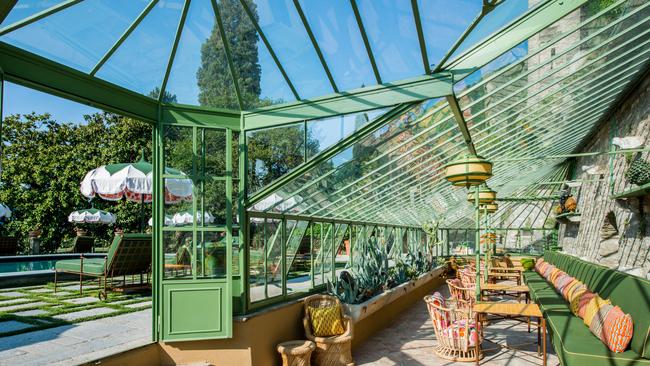
It has history, scenery, a superb micro-climate, a boating culture all its own. All those several-days-long sojourns, over the course of months – a slow, serial reveal of a place, as the seasons worked their magic on it – had shifted something for me.
At sunset in early March, the snow-capped Grigne, those mountains towering behind the slopes that coddle the mid-lake, would mirror all the spectacular colours of the chilly skies.
Wrapped in shawls on a terrace, I’d absorb the silence coming off the glassy water while I thought about the fact that the Swiss Alps, and full-blown ski season, were a 40-minute drive away – and meanwhile I was sitting amid palm trees.
A few weeks later, it was warm enough for shirtsleeves, and the lake was cross-hatched with the boat wakes of those exploring Como’s myriad towns, with their semi-secret waterfalls and Tyrolean belltowers and evocative names: Nesso and Laglio, Toriggia and Sala Comacina, famous Bellagio and less famous (but arguably lovelier) Varenna.
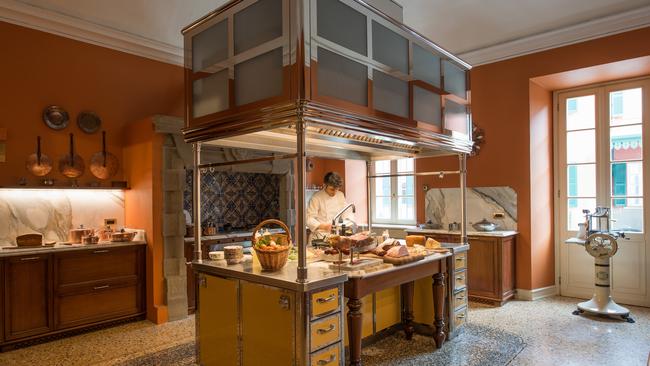
In early April, wisteria fulminated bright purple across the terraces of the historic Villa Balbianello, while above on the hillsides, acacias bloomed along a precise band of altitude, painting a horizontal streak of white through the vivid-green deciduous forest.
On Easter Sunday, I hiked from Griante to the tiny medieval church of San Martino, which clutches a rock outcrop halfway up a 1000m peak, passing plenty of curious goats and docile Alpine Browns but not another human soul.
And every visit, all day up and down the lake, sea planes from the Aero Club Como banked through the limpid air and buzzed low-ish over the water – languidly, almost improbably aloft, their hum a near-constant background track.
By July, I realised I probably qualified as, if not a full card-carrying Como-phile, at least officially Como-amenable. This wasn’t just down to the seasonal postcard moments; it owes a great deal to the locals.
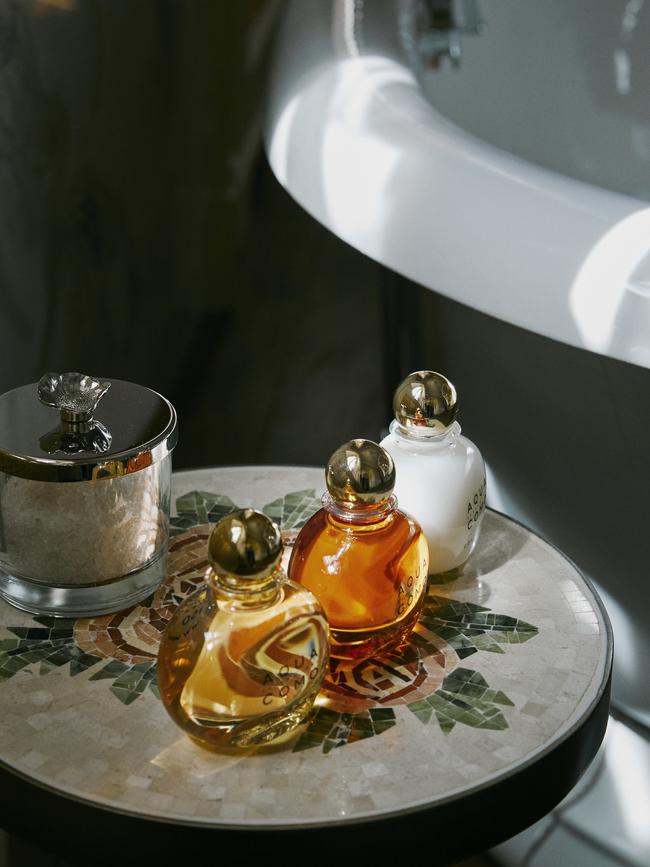
Specifically, to the De Santis family, the owners of Villa Passalacqua, and also of the Grand Hotel Tremezzo, whose history is deeply woven into Como’s own illustrious 20th-century one.
I first met Valentina De Santis a decade ago, at a conference halfway around the world in Mexico. She was 29, tall and elegant, with a mane of sable-coloured hair and a huge, inviting smile.
She was as effective and charismatic an informal ambassador as anyone I’ve come across; deeply attached to and entrenched in the place she is from, and brimming with knowledge about it.
She had just assumed a management role at the Tremezzo, purchased in the 1970s by her grandfather and reinvented throughout the 1990s and 2000s by her parents, Paolo and Antonella, who made it one of the Lake’s top destinations.
Under her co-direction, it has continued to go from strength to strength, along the way signing two of Italy’s top gastronomic names: the late great Gualtiero Marchesi, and Milan’s perennial favourite seafood restaurant, Da Giacomo.
Today, at 40, she is the driving force behind Passalacqua, which is the literal next-generation De Santis hotel, but a very different prospect from the 90-room grand dame up-shore (and at only three months into its existence, already a roaring success).
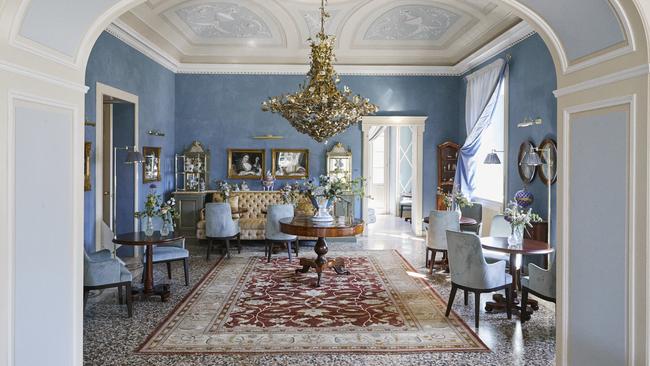
And much of what made my times on her lake revelatory – curated, impeccably organised moments and excursions and meals, often with exceptional access or some private element, or a secret address to explore along the way – was her supreme competency, and that of her staff.
Raised in the city of Como proper, De Santis recalls the family decamping to Tremezzo every summer during her childhood.
“My parents always signed me up for gruppo estivo – summer camp – but I’d spend my time in the back office, or the kitchen; I knew all the sous chefs and the reception ladies,” she says.
“Of course I was totally convinced I was being helpful, and of course,” she laughs, “I was mostly just annoying everyone.”
When the Tremezzo opened in 1910 – boasting every then-modern convenience, including not one but two elevators – it had attracted aristocrats and celebrities who would stay for weeks at a time.
Adjacent to the famous botanical gardens of Villa Carlotta, with unparalleled views over Bellagio and the mid-lake, it was briefly the pinnacle of Lombard luxury hostelry.
By the time it was sold by its original owners to a Milanese investor after World War II, its fortunes, and reputation, had slid; when her grandfather bought the hotel in 1973, De Santis recalls, “It had the charm of the past, but honestly, not much more. He had to totally restructure; some rooms didn’t even have their own bathrooms.”
It was her father, Paolo De Santis, who saw strategic potential.
“In Italy in the late ’80s, there was suddenly big demand for sites that could host incentives and retreats at a high level. He made the Tremezzo a real point of reference for the sector,” she says.
In went the subterranean entertainment and meeting spaces and floating helipad on the lake. “And as the hotel began to make good money again, he calibrated his investments more to making it appealing to leisure travellers.”
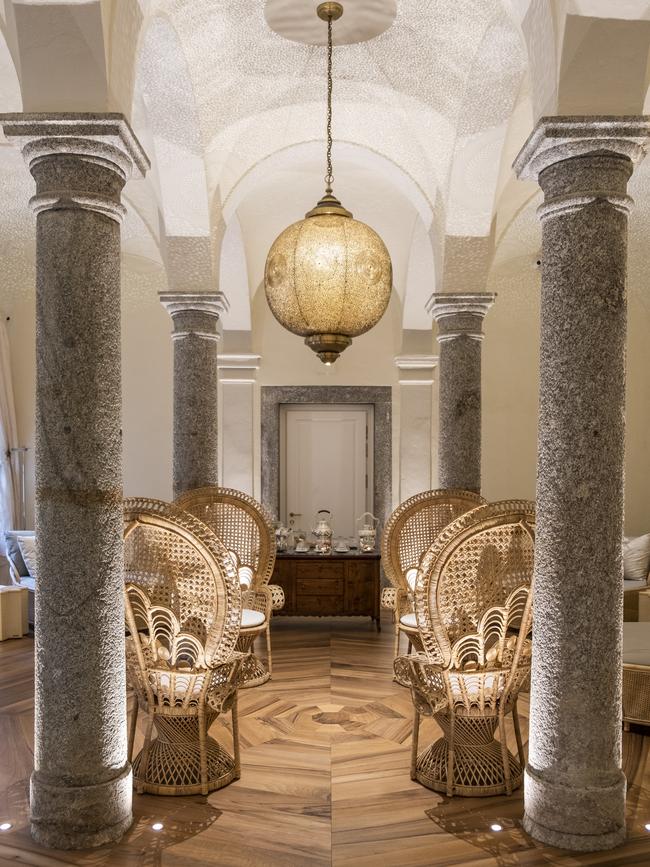
Paolo and Antonella De Santis turned their eye for the decorative arts to the project; rooms were filled with 18th and 19th century furniture and antiques, prints and original art works.
A bar and billiards room were rehabilitated on the hotel’s grand main floor. The gardens on the hill behind were cultivated.
By the early 2000s, the Tremezzo was back to being a full five-star proposition. What was missing, says De Santis, was recognition out in the world. “Everyone seemed to only remember the old Grand Hotel Tremezzo.”
Though today she inhabits the life of a glamorous hotelier with seeming effortlessness – on site almost every day in the season, entertaining guests, conferring with staff, invariably smiling – that life wasn’t a foregone conclusion.
When the Tremezzo’s centenary arrived in 2010, De Santis’s father was looking at ambitious plans for new pools (one major floating one, to replace the helipad), new restaurants, and a full-service spa. She, meanwhile, was living in Milan, working for Bain & Co, the quintessential 20-something professional-about-town.
“I was on the fashion and luxury team there, and the partner in charge was considered something of a guru, so it was a really great place to be.”
Her parents were curious to know if she saw herself joining the fold; it was apparent they hoped she would. “I was quite happy in Milan, to be honest. But I’m an only child; and I always more or less thought it would happen. It was perhaps a bit sooner than I had expected,” but the moment was both pivotal and exciting: “I wouldn’t ever have said no.”
Her first role was as marketing manager. “The life-changer for me was in Sao Paulo, at my first luxury-travel fair in 2011. I saw all the other exhibitors, and for the first time I realised what a really beautiful, unique hotel we had on our hands. And no one knew about it!
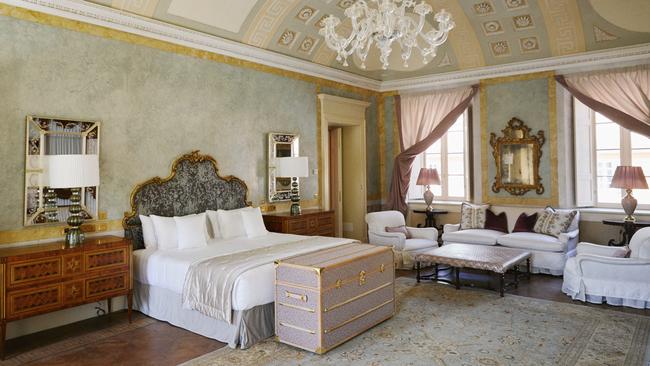
“So the following year I went to every trade show on the calendar, because I saw my road was to invite people to experience it for themselves. That was when things really started to work for us – when [the agents and journalists] came, and understood first-hand how special it was. And also that it was quite different from what people were used to, or expected, from Lake Como – less formal, a bit warmer.”
The Tremezzo was both those things. Its grand sitting room windows are hung with acres of translucent silk, the settees upholstered in fuchsia, lime and orange, arranged across two-tone parquet floors; it’s stylish and tongue-in-cheek at the same time.
Quality antiques and ornate mouldings populate some rooms, but others – notably the fifth-floor rooftop suites, added in 2012 – shade as much to Manhattan penthouse as they do old-world Italy, with timber floors or floor-to-ceiling glass walls or huge terraces with teak-decked plunge pools.
Giacomo al Lago, the overwater outpost of Da Giacomo (a heavenly collaboration brokered by De Santis in 2019), is a proper scene, reeling them in all summer long from the entire lake, its jetty surrounded by a flotilla of private water taxis.
Hospitality has proliferated on Lake Como over the past decade, and the pace is up post-pandemic: those rumoured to be currently scouting assets include Four Seasons, Rocco Forte Hotels and Belmond.
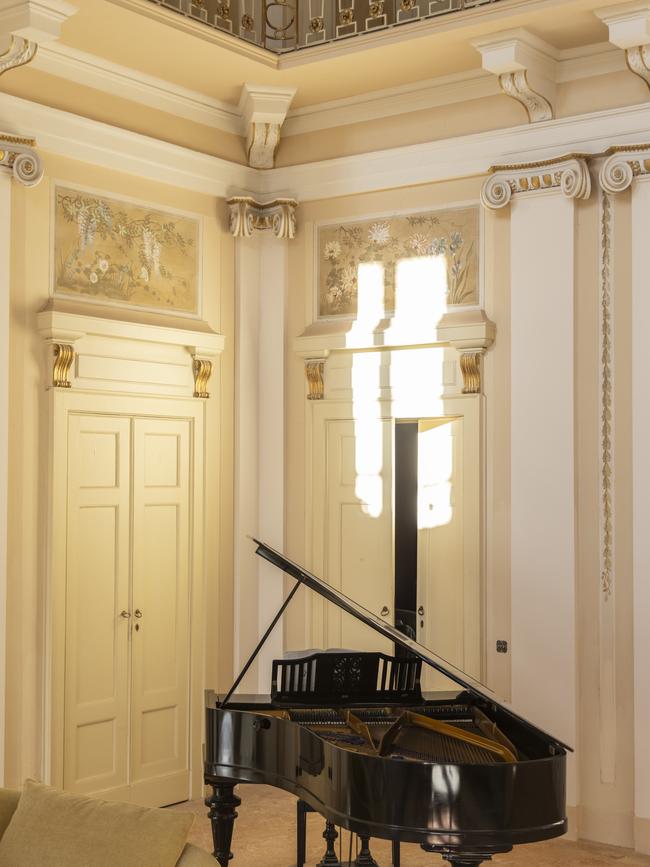
The modern lens, meanwhile, is less rare than it was: witness the Patricia Urquiola-designed Sereno, and the Mandarin-Oriental (where the food is exceptionally good; De Santis often sends guests there for lunch).
Or Villa Lario, whose seven minimalist suites are spread across four houses on two private waterside acres; or Villa Peduzzi, a private rental perched high above the town of Ardegno, with architect’s-dream interiors by Adelaide-born Albano Daminato. An Edition is (for better or worse) being constructed now, and will open in late 2023.
With Villa Passalacqua – her baby – De Santis couldn’t have played a more different hand. It is a paean to old-world comasco gentility, from the ornate plaster ceilings in the Bellini and Agnese suites all the way down through the terraced gardens and the hand-tooled marquis that shades the private jetty.
The proportions dazzle: the central double stair’s ceiling soars to 15m, sunlit by two rows of 2m-tall windows.
Bathrooms, clad in extravagant two-tone marbles, clock in at 40, 50 even 60sq m. In the bar, the enormous stone fireplace and frescoed coat of arms on the ceiling – both 1767 originals – are complemented by layered antique rugs from Iran and Nepal and deep armchairs covered in plush garnet velvet.
The palette is a bygone-era fever dream. Walls are painted rich ochre and delicate rococo blue; some are covered in mottled marmorino plaster in pistachio or olive or blush pink.
There are antiques with real provenance, and vintage and custom sconces and chandeliers – in blown glass, crystal, and hammered bronze, some dating from the late 17th century – suspended in suites, corridors and stairwells.
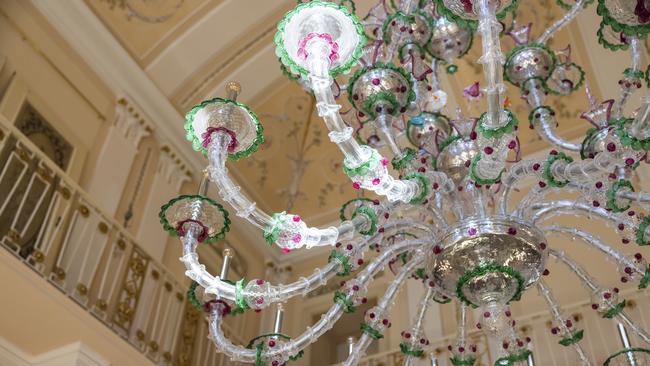
Mirrored minibars; leather-lined armoires; scads of pleated skirting and passementerie: more is resolutely more, but also apposite, here. (De Santis estimates the spend on light renovations and decoration alone topped €20 million.)
In the Palazz – formerly the stables, a long building that houses a gorgeous spa as well as eight further rooms and suites – enormous alderwood beams have been whitewashed, floors laid with wide timber, and walls hand-stencilled with tone-on-tone damask patterns.
Fortuny silk lamps cascade through the centre of a spiral staircase. Even the slippers laid out each night in every room go full maximalist: bright-yellow velvet or leather, lined in yellow toile and embroidered with Passalacqua’s three-fishes logo.
It is triumph of dedication: three years of scouring the fairs in Parma and having top antiques dealers and auctioneers in Naples, Florence, Emilia-Romagna and further afield on speed dial.
The interior spectacle is more than matched by what’s beyond the windows, however. The garden is the largest in Moltrasio, and one of the largest private ones on the lake.
The previous owners had commissioned the late Emilio Trabella (known as the “garden artist of Como”, he also authored those of Villa Balbianello) to rehabilitate Passalacqua’s own eight terraces along strictly classic Italian 18th-century lines. De Santis’s few interventions enhance more than they change things.
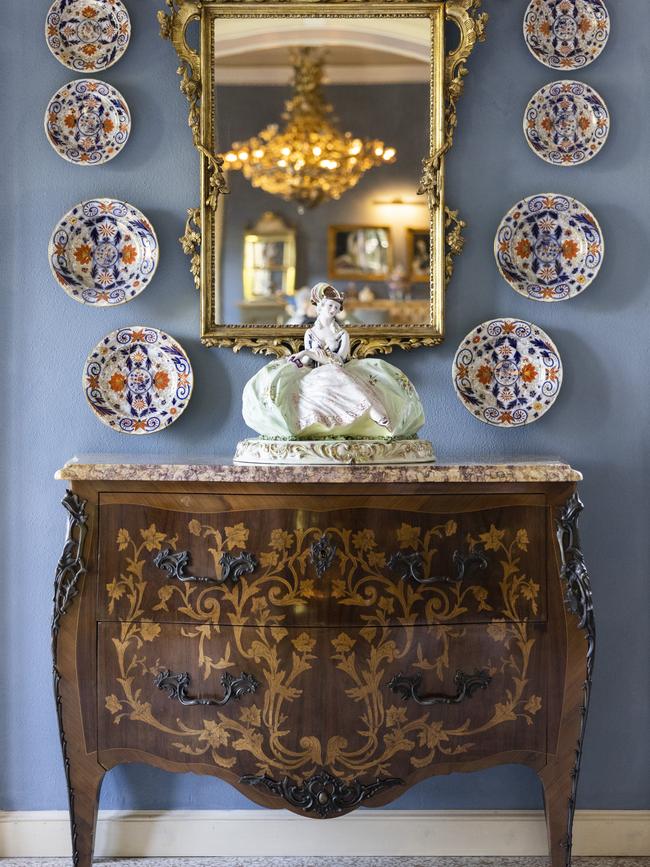
A small yoga pavilion behind a classic rose garden is shaded by a 300-year-old magnolia, while one terrace below, outdoor fitness equipment hides among mature olive trees (tucked up against the retaining wall in a restored greenhouse is a small but fully kitted gym).
There is a vegetable garden where guests can pick their own salads with the chef, before a game of bocce on the pitch next to it. Vintage chairs and loungers dot the lawns; one is hard-pressed to not find a comfortable corner for privacy and quiet, even when the Villa is at full occupancy.
But on sultry summer afternoons, those who aren’t off exploring the lake in one of Passalacqua’s fleet of vintage motorboats aren’t likely to be inclined to stray too far from the pool terrace.
Designed, like its adjacent conservatory bar, by JJ Martin, the Milan-based American fashion designer known for her ebullient prints (and even more ebullient social-media persona), it is De Santis’s only real concession to the modern.
But even here there is a dialogue with something timelessly Italian: the tiles and ceramics from Caltagirone nod to 17th-century motifs; the vivid silk patterns are wittier, younger takes on comasco florals and chintz – Martin doing her thing of turning the volume up (way up) on tradition.
Above all, like the rest of Passalacqua, it is a joyous space. Longfellow would probably gush; I see I’m getting gushy now, too. About a lake. De Santis’s work is done.



To join the conversation, please log in. Don't have an account? Register
Join the conversation, you are commenting as Logout